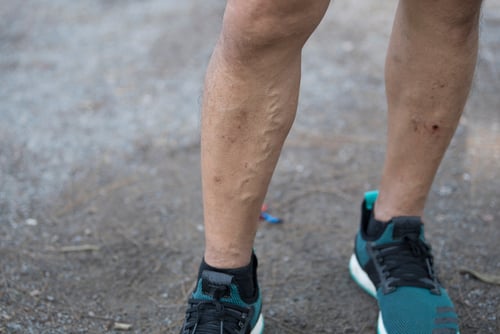The Hidden Hurdle: Vein Conditions in Athletes and the Path to Peak Performance

In athletics, where every second shaved off a time can signify a new personal best and where every bit of energy conserved is a victory, there's an often-overlooked factor that can impede even the most disciplined athlete's performance: a vein condition.
Athlete Awareness and the Impact of Vein Conditions
Athletes, by virtue of their rigorous training and heightened body awareness, are finely tuned to the nuances of their physical condition. They notice when something is "off" — a slight dip in performance, a longer recovery period, a feeling of heaviness in the legs — far earlier than the average individual might. Yet, despite this awareness, vein conditions can stealthily undermine an athlete's efforts, leading to frustration and, in severe cases, a reconsideration of their athletic future.
Vein conditions, or venous insufficiency, occur when the valves in the veins that help return blood to the heart become weakened or damaged, leading to blood pooling in the legs. This condition can manifest through both visible and invisible signs, ranging from fatigue, sleeplessness, and restless leg syndrome to visible, ropey veins. It's important to note that only a small percentage of individuals with a vein condition have visible varicose veins. For most, the vein condition is not readily visible but the symptoms are readily experienced. While these symptoms can be mistaken for the regular toll of intense training, they represent a significant, though treatable, medical condition.
The Athlete's Challenge: Pushing Through Pain
Athletes are accustomed to pushing through pain and fatigue, often attributing such symptoms to their training regimen. This mindset, while beneficial in overcoming temporary obstacles, can delay the recognition and treatment of vein conditions. Due to their resilience, athletes tend to ignore or misinterpret the early warning signs of vein conditions, allowing the issue to progress further than necessary before seeking help.
Treatment and Triumph: Returning to Peak Performance
The good news is that once diagnosed, vein conditions can be easily treated, leading to significant improvements in both leg comfort and athletic performance. Treatments can range from lifestyle changes and compression therapy to minimally invasive procedures that address the underlying venous insufficiency. Athletes, with their robust physical conditioning, often see remarkable results post-treatment, returning to their sport with renewed vigor and, in some cases, achieving new personal bests. Additionally, the downtime is minimal. They can begin light exercise the next day, and usually within a week, they are back to their normal training regimen.
I recall the story of a female athlete who, after years of living with a visible vein condition, sought treatment due to declining performance, exemplifies the profound impact that addressing venous issues can have. Just three weeks post-treatment, she not only returned to running but also set a personal record in a half marathon. Her experience underscores the critical link between vein health and athletic performance, highlighting the importance of early intervention.
Prioritizing Vein Health in Athletic Performance
Athletes must recognize that vein conditions are primarily genetic and not a reflection of their health or training practices. Awareness is the first step: understanding that the invisible and visible symptoms they experience could be due to venous insufficiency is key to seeking timely evaluation and treatment.
For athletes noticing signs of a vein condition, a specialized vein reflux ultrasound and evaluation by a vein care specialist are essential. This diagnostic process can identify venous insufficiency and pave the way for targeted treatments, enabling athletes to regain their performance edge and continue pursuing their passions without compromise.
Vein conditions represent a significant but addressable challenge for athletes. Through early recognition, comprehensive evaluation, and effective treatment, athletes can overcome this hidden hurdle, ensuring that their vein health supports, rather than hinders, their athletic ambitions. My goal is to shed light on the relationship between vein health and athletic performance and offer hope for athletes facing this challenge. By prioritizing their vein health, athletes can continue to push the boundaries of their capabilities and achieve their full potential.



